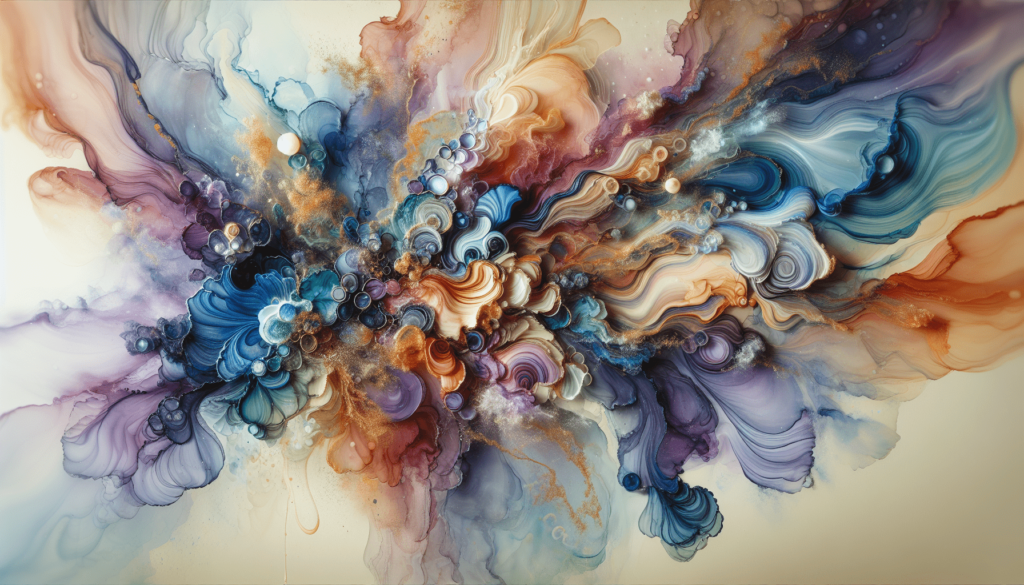How confident are you in the permanence of alcohol inks in your artistic projects or creative endeavors? Understanding the lasting nature of any medium you use is crucial to achieving the desired results, especially if your work is intended to stand the test of time. Alcohol ink, celebrated for its vivid colors and fluid dynamics, has been gaining popularity among artists and crafters alike. However, questions often arise regarding its permanency. This article examines the endurance of alcohol ink, shedding light on its characteristics and how it can affect your work over time.
What is Alcohol Ink?
Alcohol ink is a type of highly pigmented dye, combined with an alcohol base, allowing it to have a unique flow and vibrant finish. The popularity of alcohol inks has surged in recent years, primarily due to their versatility and the mesmerizing effects they can produce. These inks are used widely across various non-porous surfaces, such as metal, glass, plastic, ceramics, and certain types of paper.
Composition of Alcohol Inks
The components of alcohol inks contribute to their unique properties. Primarily, they consist of pigments suspended in an alcohol solution. The alcohol serves as a rapid-drying solvent, distributing the ink’s pigments in unique, often unpredictable, patterns as it evaporates. The result is often a vivid composition with brilliant colors that art enthusiasts and professionals find appealing.
Applications of Alcohol Ink
Alcohol inks are employed in a wide array of artistic and craft applications. From creating abstract masterpieces to functional works like decorated homeware, their utilization is vast. Artists often favor them for their ease of manipulation and striking color palette, providing endless possibilities for creative expression.
Factors Influencing Permanence
The permanence of alcohol ink largely depends on several factors. Understanding these elements can help you anticipate the longevity of your work with more precision, allowing for informed choices when opting for alcohol ink in your projects.
Surface Type
The type of surface on which alcohol ink is used is a major determinant of its permanence. Alcohol inks are ideally used on non-porous surfaces, which minimize absorption, thus helping maintain the vibrancy of the artwork. Porous surfaces, on the other hand, soak up the ink too quickly, potentially diluting the color and leading to premature fading.
Environmental Conditions
Environmental conditions such as exposure to sunlight, humidity, and temperature fluctuations significantly affect the permanence of alcohol inks. Prolonged exposure to ultraviolet rays can cause colors to fade over time. Similarly, excess moisture and fluctuating temperatures may influence the ink’s stability and appearance over time.
Quality and Brand
The quality and brand of the alcohol ink also impact its durability. High-quality inks, often produced by established brands, are usually formulated with pigmentation meant for longevity. While they may come at a premium cost, they could save you the inconvenience of early deterioration, especially in important projects.

Techniques to Enhance Permanence
While alcohol ink isn’t naturally known for extreme permanence, certain techniques and approaches can help enhance its longevity. Here are some effective methods to make your artwork more durable and last longer.
Sealing the Ink
Sealing is a crucial step for preserving the integrity of alcohol ink art. Applying a clear, protective sealant can shield the ink from harmful UV rays, humidity, and other environmental conditions that can lead to fading. Various sealants are available, each providing different levels of protection. Selecting the right one for your project can significantly influence its lifespan.
Types of Sealants
| Type | Characteristics |
|---|---|
| Spray Varnish | Quick-drying and ideal for multiple thin layers; provides a glossy finish. |
| Resin Coating | Offers thick, protective coverage with a glass-like finish; suitable for heavily handled items. |
| UV Resistant Spray | Specially formulated to filter out harmful UV rays, extending the life of vibrant colors. |
Storage and Handling
Proper storage and careful handling play crucial roles in preserving alcohol ink art. Storing pieces in stable, controlled environments away from direct sunlight can prevent premature aging. Additionally, handling artwork with clean, dry hands reduces the risk of transferring oils or moisture, both of which can affect ink stability.
Potential Challenges with Permanence
While alcohol inks offer numerous positives, there are potential challenges associated with their permanency. Being aware of these challenges helps you mitigate risks and implement more effective strategies for preserving your artwork.
Color Fading
As mentioned, color fading is one of the most common issues when it comes to alcohol ink artwork. This challenge primarily arises due to UV light exposure. Employing UV-blocking sealants and avoiding lengthy exposure to sunlight can mitigate fading issues significantly.
Alcohol Reactivation
Another challenge with alcohol inks is their ability to reactivate when they come into contact with solvents, such as alcohol. This can be a double-edged sword, as it allows for further manipulation after drying but may also result in inadvertent smudging or alteration of completed work. To combat this, proper sealing cannot be overstated, creating a barrier to prevent reactivation.

Evaluating Longevity in Different Uses
Different applications of alcohol inks require their level of permanence to be evaluated accordingly. Here are some typical applications and considerations regarding their durability.
Artworks and Displays
For artworks intended for display, permanence becomes essential. Artists must apply protective measures such as UV sprays and ensure stable environmental conditions. Frequent inspections for signs of wear or fading can also aid in timely interventions.
Functional Items and Crafts
When alcohol ink is used in functional items like coasters, jewelry, or decorative pieces, durability demands exceed mere aesthetic maintenance. Ensuring proper sealing, opting for alcohol ink on appropriate surfaces, and educating end-users on proper care and handling are crucial for these applications.
Conclusion
Navigating the world of alcohol ink requires a comprehensive understanding of its properties, especially regarding its permanence. Although alcohol inks may not seem indefinitely enduring on their own, the knowledge of factors affecting their durability and methods for protection can bolster their lifespan admirably. Whether for artistic masterpieces or everyday functional objects, our guidance aims to assist you in making informed decisions as you engage with this exciting medium. Evaluating the permanence of alcohol ink requires adaptability and readiness to employ suitable techniques, ensuring that your creativity endures just as brilliantly as it begins.



